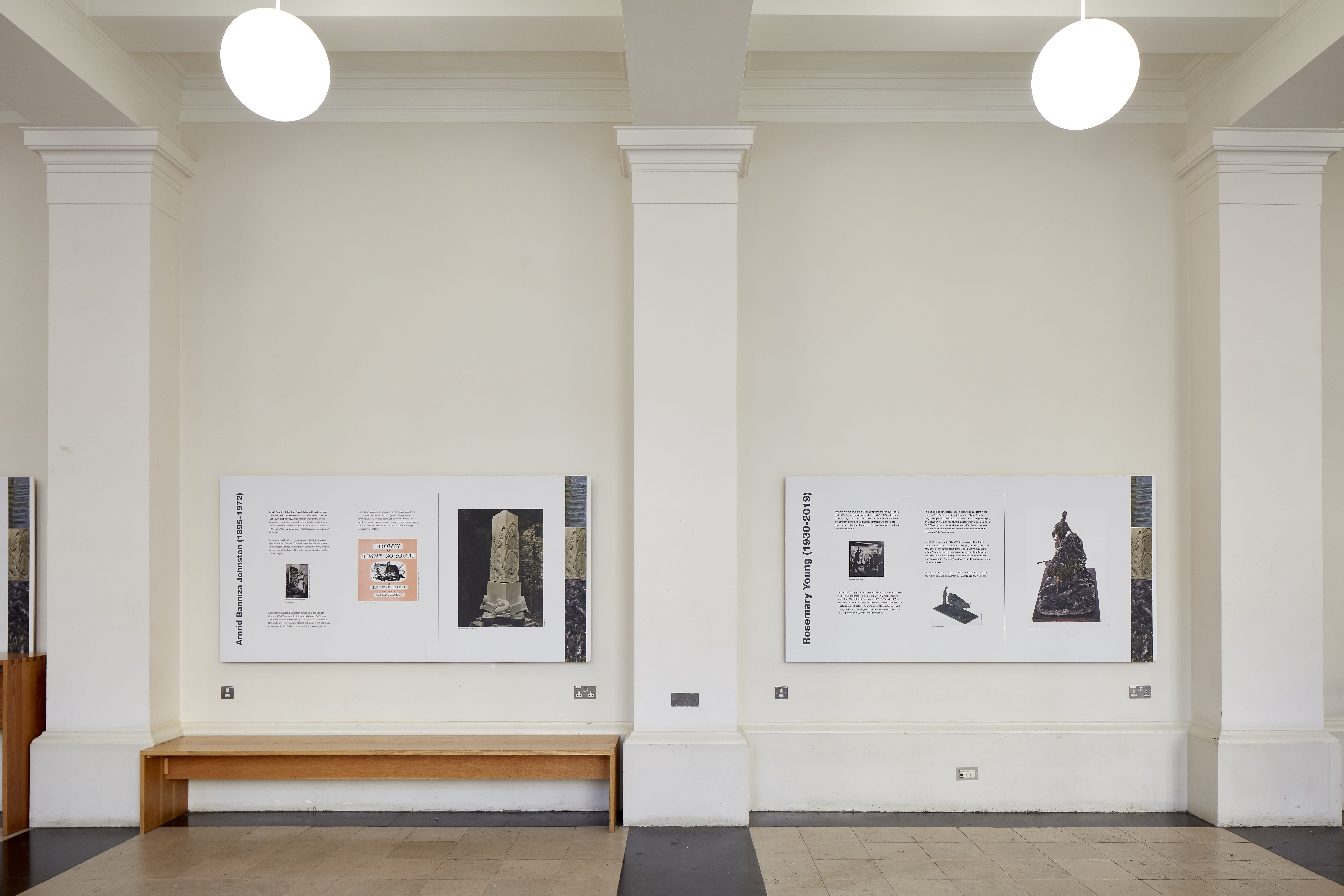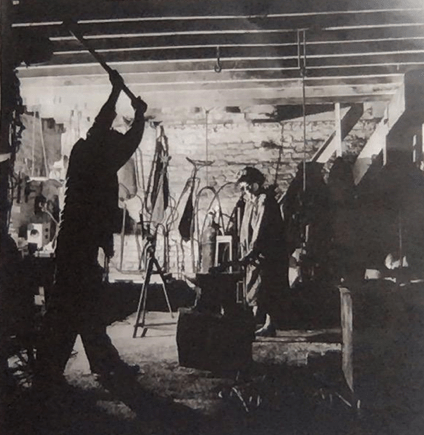Object of the week 384: Rosemary Young, Bull, 1951
By Nina Pearlman, on 28 June 2019
This blog is written by a team of UCL Museum Studies students – Sarah Waite, Lok Hei Wong, Patricia Roberts and Yiting Fu – and draws upon their research project into the Slade School of Fine art historic sculpture prize, undertaken in collaboration with the UCL Art Museum as part of their MA degree.
VISIT THE SLADE SCULPTURE PRIZE DISPLAY IN UCL’s NORTH CLOISTERS on till 17 FEBRUARY 2020
See image credits below
We had the fantastic opportunity to focus our Collections Curatorship course project with UCL Art Museum on an area of the Slade collection that is under-researched. During our research, we uncovered this small bronze sculpture in the UCL Art Museum’s store. Bull (1951) was modelled by Rosemary Young (b.1930) , who was a student at the Slade from 1949 to 1953, and then cast by Reg Butler (1913-1931), who taught at the art school. The artwork won the Slade Sculpture Prize in 1951 and is the only prize-winning sculpture retained by the School and now part of UCL Art Museum’s Slade Collection . A highly sought after honour, to receive a Slade prize meant that the student’s work was recognised as exemplary by a panel of the most highly regarded artists and academics in Britain.
Rosemary Young
During her time at the Slade, Young was under the tutorship of Professor A.H. Gerrard, sculpture assistant Frederick Edward McWilliam and artist Reg Butler.
After Young graduated from the Slade, she went on to become an assistant in Reg Butler’s sculpture studio. Young gave up her own work for an extended period in order to focus on casting and producing Reg Butler’s work, eventually becoming his second wife. In this period of Young’s life, the narrative of her work becomes subsumed into the role of ‘assistant’.
Young describes how none of her female peers at the Slade became successful artists, and reflects on how the expectations of the feminine role in the 1950s were incompatible with developing a career as a famous artist:
“(To become a famous female artist at the time) you had to be a very very extraordinary person […]it was almost as if, not through any fault of his, he (Butler) just sucked it away, he drew it out, drew all your energy away from creativity, into being part of a partnership”. (Butler, 1999, p.138)
During our research project, we have been particularly interested in giving the Slade’s female sculptors the recognition that they deserve, after having been excluded from the art historical canon for many years due to the intersecting factors of socialised and institutionalised sexism.
Whilst Young’s contribution to British Sculpture may be overlooked today, at the start of her career she was a part of the ‘Young British Sculptors’ exhibition which toured galleries across Germany between 1955 and 1956. As well as being one of only two female sculptors to have shown work in this exhibition, Young had only recently graduated from the Slade. To have been selected by the British Council to represent her country internationally was a huge honour and a mark of her significance to British sculptural practice at the time.
Furthermore, she exhibited work alongside work by Robert Clatworthy and Takis Vassilakis at the Hanover Gallery in 1955. John Berger’s review of the Hanover Gallery exhibition captures the character of Young’s work:
“Her excitement must surely derive from the degree to which she can bend, separate and impress a gentle, calm form into vitality” (Berger 1955).
To learn more about Young, her oral testimony is available here and her exhibition history can be found here
A prize-winning sculpture: Bull
The Slade has never actively collected prize-winning sculpture. However, the exception is Bull. Whilst it is unknown why this sculpture in particular was retained by the School, it is likely that the connection to Reg Butler, played a significant role. It is one of the earliest examples of the unique shell bronze casting method that the famous British sculptor used to make many of his later works. Therefore, Bull is likely to be a commercially valuable sculpture, as well as an interesting work that documents how his shell bronze casting method developed. Furthermore, given Butler’s affection and high regard for Young, it can be speculated that he was able to influence the Slade to collect Bull whilst he was still working as a lecturer.
Whilst the rest of the prize-winning works remain unknown, Bull acts as a tangible representation of the missing sculpture prize collection as a whole: a sculpture to sit upon the ‘empty plinth’. Young’s sculpture represents the qualities that would have made a prize-winning work: rigorously honed technical training, combined with individual creativity and vision. Bull can also exemplify the diversity of sculptors that were winners of the Slade sculpture prize, which was unusual for traditional art schools at the time. Created at a time when female sculptors were in the minority in the British art sector, it acts as a physical reminder of the prevalence of female sculptors at the Slade, who were accepted into the school in equal numbers as the male candidates, and who won sculpture prizes more regularly than their male counterparts.
Finally, a prize-winning work marks a time of potential for a student, a turning-point in their careers as artists. Bull embodies Young’s first exposure to the shell bronze casting method which would become the predominant casting method for her sculpture in later years. We imagine the other prize-winning works to also be sculptural embodiments of artistic progress and promise.
To find out more about the history of the prize-system at the Slade that dates back to the formative years of the School and continues today visit Spotlight on the Slade.
To find out more about the history of women artists at UCL and journeys in gender equality across the disciplines more widely visit Disrupters and Innovators and Prize and Prejudice
References
Butler, R. & Whiteley G. (1999-2000) ‘National Life Stories: Artists’ Lives: Rosemary Butler’. The British Library. [online] Available at: https://sounds.bl.uk/related-content/TRANSCRIPTS/021T-C0466X0094XX-ZZZZA0.pdf [Accessed 10/03/19].
Berger, J. (1955) ‘Two Views’. New Statesman. London.
Image credits listed in order of appearance:
Rosemary Young, Bull, 1951. UCL Art Museum LDUCS-10010
Photograph of Rosemary Young working alongside Reg Butler in his studio. (photographer unknown) © Witt & Conway Library, Courtauld Institute of Art, London
 Close
Close




